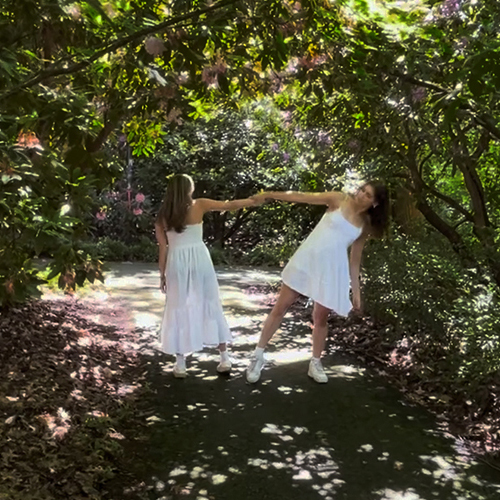Chanté Hamann is obsessed with costumes. A School of Drama (SoD) graduate student in costume design, Hamann is particularly intrigued by vintage costumes that reference the past. So when four large boxes of costumes donated in the 1960s were discovered in SoD storage, she was eager to learn what was inside.
What she found was the best present she could imagine.

The boxes held a trove of costumes worn by famed actor Sarah Bernhardt and others more than a century ago, including hats, handmade silk shoes, beaded and sequined sashes, undergarments, wigs, and nearly 20 gowns. “Many of them are ball gowns with a capital G,” says Hamann. “They have big sleeves, trains, everything.”
Immediately realizing the significance of the collection, Hamann invited fellow graduate students and SoD design faculty to help with the initial unpacking of the boxes. Skip Mercier, senior lecturer for set and costume design, recalls a memorable evening of discovery. “That night there was a lot of oooh-ing and ahhh-ing,” Mercier says. “As we uncovered each layer, it was like an archaeological dig. It almost felt like we were going through civilizations of things.” The conversation quickly turned to next steps, including how to research and preserve the collection.
Some information was already available, including the source of the donation — a costume house in Portland. When the School of Drama received the boxes in the mid-1960s, information tags were added to many of the pieces, but most offered just a basic description. “It seems the collection had been sorted through at the time and then neatly tucked away,” says Hamann.

Hamann was immediately drawn to a box that had “Costumes owned by Sarah Bernhardt,” jotted on its side. Bernhardt, a French stage actress who performed internationally in the late 1800s, was known for the outrageous volume of clothing she owned and for acting in male lead roles — which explains why some of the suede breeches, vests, and other male clothing in the box have nips and tucks to better fit a female body. Bernhardt was also memorable for her a larger-than-life personality. “Later in life she had one of her legs amputated to the hip,” says Hamann, “and like the proper little diva she was, she opted for being carried around in her ornately decorated chair by two men.”
These garments still have a story to tell, and we are in the business of storytelling.
The boxes also revealed costumes worn by Sarah Truax, an American stage actress who toured and performed on Broadway. Through her research, Hamann uncovered a 1904 photo of Truax performing in Seattle, in which she appears to be wearing a costume from the collection. “Both of these Sarahs were known to have performed in Seattle,” says Hamann. “Sarah Bernhardt performed at the Cordray’s in 1891 and Sarah Truax performed at the Grand Opera House in 1904.”
Truax later settled down in Seattle and — in an odd coincidence — was buried in a Lake Forest Park cemetery across the street from Hamann’s apartment. “I haven’t gone to find her yet, but I feel like I need to,” Hamann says.
Learning who wore various costumes has been intriguing, but understanding how the garments were constructed is even more valuable. Unlike regular clothing, costumes often have unusual features to make a greater impact on stage or to facilitate a quick change of clothing. “There are often weird things on the insides of them that wouldn’t be put together that way just to walk down the street,” says Hamann. “There’s lots of magic in there. I wish I could pick the brain of the person who actually made some of these.”

Hamann would also like to put dates to each garment, but that has been challenging since many of the costumes were created using street clothing from an earlier period, or by repurposing an existing costume. The same is true today. Students designing costumes for SoD productions often peruse local thrift shops or the School’s costume collection for items they can modify to reflect the goals of a production.

These vintage costumes won’t be repurposed, and are unlikely to be worn on stage ever again. The fabrics, particularly the silks, are far too fragile for that. But Hamann hopes they can be shared with the public in some other way. “I would love to show them off,” says Hamann. “Eventually it would be great if we could do some sort of gallery so the public can see some of this.”
But first Hamann has more research to do — on the garments themselves, and the actors who wore them.
“Now more than ever, I wish these items could speak,” she says. “I wish they could tell us about their tour of Seattle and other places. These garments still have a story to tell, and we are in the business of storytelling.”
More Stories

A Statistician Weighs in on AI
Statistics professor Zaid Harchaoui, working at the intersection of statistics and computing, explores what AI models do well, where they fall short, and why.

The Mystery of Sugar — in Cellular Processes
Nick Riley's chemistry research aims to understand cellular processes involving sugars, which could one day lead to advances in treating a range of diseases.

Dancing Across Campus
For the dance course "Activating Space," students danced in public spaces across the University of Washington's Seattle campus this spring.